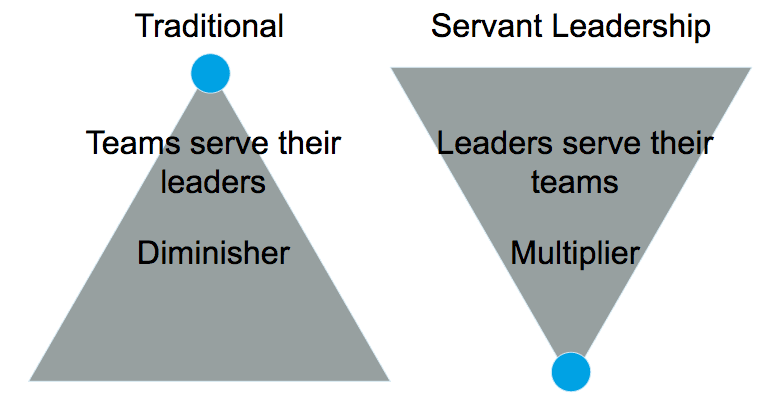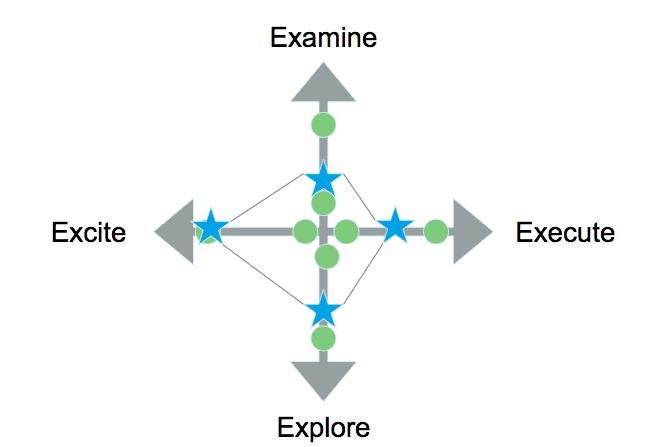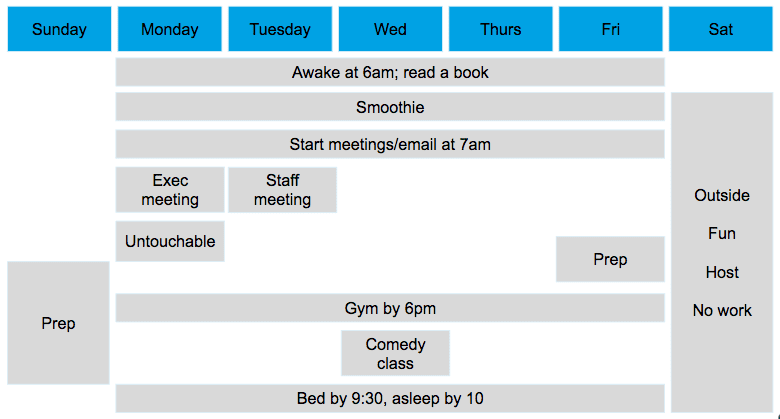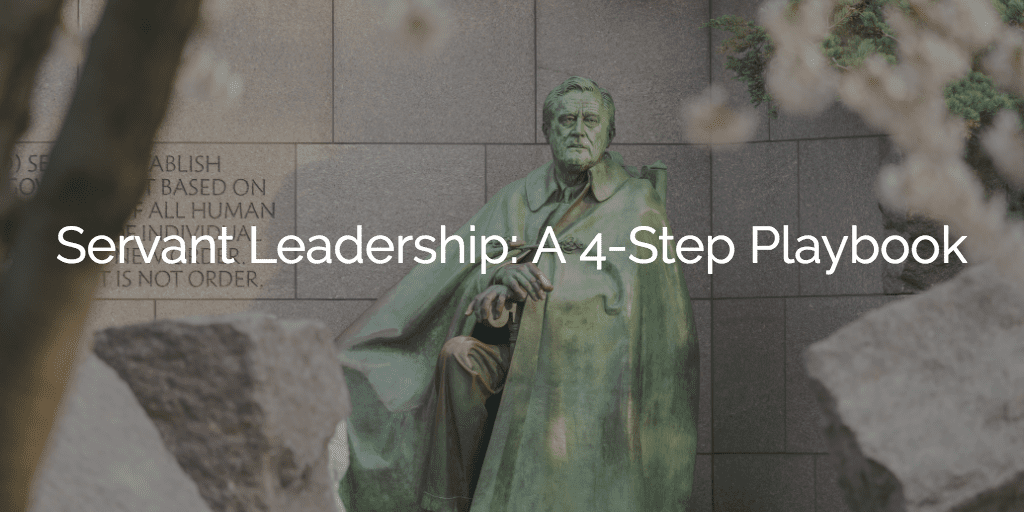From the time I was little, my dad shared stories with my brother and me about heroes.
There was a story about how the Wright Brothers, two little-known bicycle mechanics who worked tirelessly on their flight experiments for years, were greeted in France by unfamiliar praise from crowds of admirers of their innovation. There was another story about how Roosevelt secretly sent aid to the British before the U.S. entered World War II, even when faced with political opposition to getting involved, because it was the right thing to do. There were other stories that my dad made up at bedtime, sitting in the hallway between my and my brother’s respective bedrooms, about heroic kids who saved the day. The stories varied, but a central character recurred: a leader with a vision to humbly serve others. A servant leader.
Nowadays, I don’t hear many stories about servant leadership in the media. I could go on about the very different narratives of leadership that are told nowadays—carrying themes like narcissism, greed, materialism, workaholism, sociopathy, mental illness, and others—but those have been well documented elsewhere.
I think we need more compelling stories of leadership in our lives. We need to know what to expect from our leaders, and as we grow in our careers, we need to know what to aspire to, and how to get there. We need more inspiration in general.
Servant leadership is the idea that leaders serve their teams rather than teams serving their leaders. Leaders don’t sit at the top of the pyramid; they invert the pyramid, empowering everyone else. The concept was created by Robert Greenleaf and described more here. (There are parallels to the concepts in Multipliers.)

I’ve witnessed and heard many stories of servant leadership among managers at Gainsight. Among them:
- Whenever Nadav, our Director of Enterprise CSM, wants his team members to try out a new motion to help our clients, he performs the motion himself first. This shows his team what’s possible and trains them on how to do it. Nadav has traveled literally around the world (multiple times) to support his team in this way.
- I was in a meeting with Daniel, our Manager of Solution Architects, where we were discussing work-life balance for the team, which at the time wasn’t great. Daniel took a stand in saying that he believes managers should formally take responsibility for their team’s work-life balance, in the same way they are responsible for operational results.
- Elaine, a thought leader in our Education team, led a session to document how to thoughtfully manage our teams through change, a permanent aspect of our lives at a growth-stage company.
To some, these activities might seem small. But imagine the world we’d live in if every action stemmed from a philosophy of servant leadership.
That’s not to say leaders on our team don’t make mistakes. I personally have made plenty of them. Sometimes we make mistakes due to our emotional state: we’re stressed, threatened, or otherwise in pain. Sometimes we make mistakes because we don’t have the right knowledge: it takes experience, creative thinking, and solid judgment to arrive at a win-win-win in any given particular situation. In either case, our intentions aren’t bad, but our actions are.
I think most people want to help others. Even if they’re not aware of their desire to serve right now, they’ll likely discover it later in life. And perhaps some inspiration would help—which is my goal in launching the Be Brave video series soon.
Hear the story behind “Be Brave” in Allison’s keynote from Pulse 2018
But an important root of the problem is that even when people want to serve, they don’t know how. Servant leadership isn’t merely about wanting to help; it’s about taking actions that are effective in helping.
We need a playbook for how to be a servant leader in the context of a growing company. You’ve committed to your investors to achieve high targets; you know that change is a necessary constant; you need to do more with less. All of these factors make it difficult to serve your team.
In the spirit of creating this playbook together, I’ll share a few frameworks that I’ve found helpful in trying to be a servant leader myself. You’ve probably discovered your own frameworks—and I’d love for you to reply to this post with your ideas. I’m learning every day.
The frameworks I discuss here are:
- Growth Mindset: Be a role model to your team by showing them that even leaders need to grow.
- Purpose: Grow with a purpose in mind.
- Energy: Help your teammates thrive.
- Self-Compassion: Be there for yourself so you can be there for your team.
Growth Mindset
In my view, no one is ever done growing. When we stop growing, we die inside. That’s true for leaders as well as team members. Leaders should role-model this growth mindset, so that team members emulate them, and so that team members can support them in their own progression.
Every year or so, I create a professional growth plan for myself and share it with my entire team in an All Hands. I share feedback I’ve received from across my organization, and then share behaviors that I’m going to Keep Doing, Stop Doing, and Start Doing.
I’ve found the team really appreciates this. They know I’m not perfect, and they are grateful that I recognize it, too. They appreciate that I’m working on responding to their feedback, and even want to help me in my own growth. They sometimes even see it as courageous for me to be vulnerable with them.
For example, one anonymous comment from a teammate in my 360-degree review this year was, “Allison sometimes reacts to being blindsided.” It referred to a couple of situations where I wasn’t adequately prepared for a client meeting, and I communicated with too much frustration about it after the meeting. Talking about this feedback with my team gave us an opportunity to grow closer. I talked about how much pressure I put on myself to lead client meetings super effectively, and that when I’m unprepared, it feels like being thrown on stage to act in a play, but without the script, and expected to “perform.” My team and I talked about how I can respond more calmly in situations where I’m blindsided and how together we can improve our process for preparing me for client meetings. The team was happy to help—they want to set me up for success.
If we can “grow in public,” our teams will be more likely to grow, too.
Purpose
Much has been written about how people want purpose in their work. They’re not always inspired by the numbers, by operational initiatives, or by short-term wins. They want to feel they are contributing to a broader purpose. It’s the job of a servant leader to illuminate that purpose.
There’s a particularly strong purpose in Customer Success. How humans interact with technology is a fundamental question of our time. Software is eating the world, robots are more capable than ever, and AI can replicate at least some human capabilities. Interestingly, Customer Success Managers are at the forefront of human-machine interaction in the business world. When software has bad UI, when it’s imposed top-down, or when it’s not natural to adopt, the CSM is on the front lines, empathizing with the poor human being who’s struggling to use the software. It’s the CSM’s job to break down the barrier between human and machine, in a way that’s human-first. To me, serving that purpose is among the most valuable causes we can contribute to in our lifetimes.
Team members don’t just want a purpose to follow; they also want to see that their leaders are motivated by a broader purpose. I’ve spent a lot of time thinking about my purpose in my work, particularly since earlier in life, I had no intention of entering the software industry, and since as a student of moral philosophy in college, I spend a lot of time (too much time?) reflecting on more existential questions.
A couple months ago, Prakash Raman, an executive coach, joined an offsite that I was hosting for my extended leadership team. He posed a question to us: When you’re on your deathbed, what do you want your legacy to be?
For me, it’s pretty simple:
- I want to have built meaningful relationships with my family and others who I am close with.
- I want to have followed the ethical precepts that I hold dear, every step of the way. (The means matter, not just the end.)
- I want to have built communities that inspire others to create a more ethical world. (Servant leadership is fundamental to this one.)
If we as leaders can be open in sharing with our teams what we hope our legacy will be, and helping them define their own desired legacies, our teams will feel a whole new level of inspiration in their work.
Energy
A few years ago, a leadership coach shared with our exec team a personality framework called the 5 Dynamics. It’s in the realm of Myers Briggs and the Enneagram, except it focuses on the energy that you derive or expend when performing four different activities at work. Those activities are:
- Explore: brainstorm, create, pursue breadth
- Excite: inspire, motivate, build relationships
- Examine: analyze, probe, become an expert
- Execute: take action, “GSD”
If you derive energy from the activity (you’re flowing when you do it), you’ll place a star on the outer part of the corresponding axis. If you have to expend energy from the activity (you’re forcing yourself to do it), you’ll place a star on the inner part.

I’m not certified in the 5 Dynamics, and I’m certain that my own re-interpretation of the framework above has departed from the original. But I’ve found the framework invaluable in illuminating how to help my team members define their roles in a way that maximizes their energy, how to create teams of people that complement each other so that every activity is performed by someone who is energized by it, and how to quickly get to know candidates I’m recruiting. (I’ve used this framework in literally hundreds of interviews, and candidates love it.)
Servant leaders know how to empower every team member—and that means putting them in situations where they are highly energized.
Self-Compassion
It’s hard to serve others when you’re not serving yourself. You can recognize a burnt-out leader by their emotional volatility, reactive decision-making, reluctance to work through conflict, or inability to feel empathy for others. When leaders burn out, their pain cascades through the entire team.
So it’s critical that leaders serve themselves, too. That means figuring out how to optimize your own energy level throughout the week. Over the years I’ve developed a weekly schedule that I’m laser-focused on maintaining. Here’s what it looks like:

I start my work week with a few hours of work on Sunday afternoon/evening to prepare for the week: set priorities, write my weekly update to the company, return to “inbox zero”, and think deeply about certain topics (or write a blog post, as I am doing right now). Although I don’t love that it cuts my weekend short, I am in a much better state coming into our Monday morning executive team meeting when I feel prepared.
I follow a rule to be in bed at 9:30 p.m. and asleep at 10:00 p.m. every day (I can’t say I don’t make exceptions, but I’m pretty religious about this). I am a morning person, and I also am one of those unfortunate people who need eight hours of sleep. I wake up at 6:00 a.m. and refuse to check my email until I’ve gone through my morning routine of reading for 20 minutes and getting ready. Whenever I make an exception and check my email before I’ve completed the routine, it puts my mind in a scattered state for the rest of the day—whereas reading helps me focus, think bigger-picture, and tap into creativity.
I make a daily smoothie for myself that includes protein, fruit, and vegetables, which ensures that I get the nutrition I need from the start of the day. Before I adopted this habit, I’d repeatedly skip breakfast because I wouldn’t have time to eat it. Blending a smoothie takes one minute, and I can drink it while in meetings.
I start my first call (or check my email) starting at 7:00 a.m., and the rest of the day is back-to-back 15- or 30-minute meetings until 5:30 p.m. Then I check email for 30 minutes, and head to the gym. I block off time for the gym on my calendar every day, because for me, “sound body = sound mind.” On the way back from the gym, I check email again, and then from 7:30 p.m. onward, I do not check email. I want to be 100% present for my significant other. If someone needs an answer from me that night, they know they can call or text me, or else I’ll reply at 7:00 a.m. the next day. Again, I can’t say I never make exceptions, but the more closely I align to this schedule, the more energized I am.
We have a rule at Gainsight that we don’t send email on Saturdays, and for me, I’ve extended that to not working at all on Saturdays. I need a day when I can totally disconnect and focus on other parts of my life. I usually spend it outside in nature, hiking 10-15 miles through the Bay Area hills. Often I host a dinner or game night on Saturday night.
I spend my day trying to empower others—through coaching, persuading, comforting, reconciling, aligning—which, when effective, requires a great deal of emotional energy. To take care of others, I need to take care of myself.
***
I’m not quite the leader I want to be. I come home every day knowing that I could have handled a conversation better, that I could have communicated my intentions more effectively, that I could have achieved the same result in a better way. I’m not done growing. And hopefully, none of us are. It means we’re working harder to serve others.
If you’ve seen examples of servant leadership, I’d love to hear from you. What if we created the stories that we want to hear?

